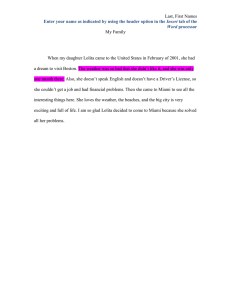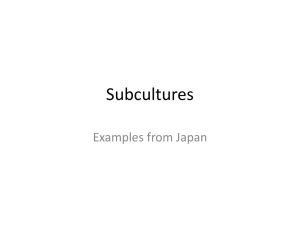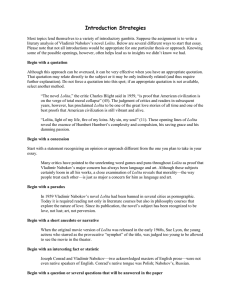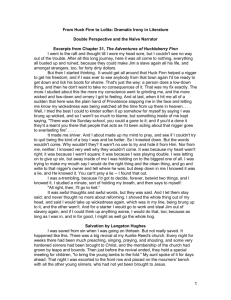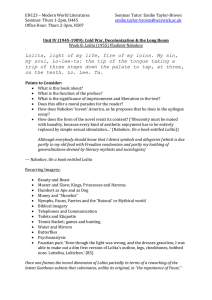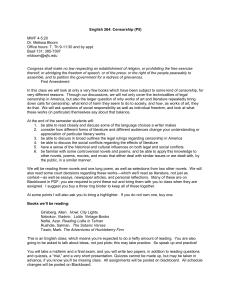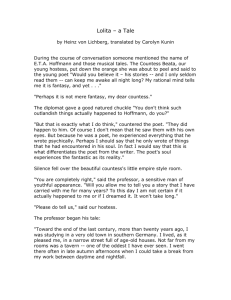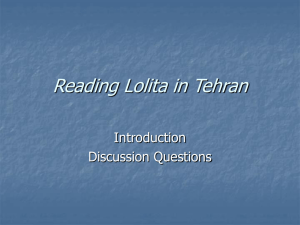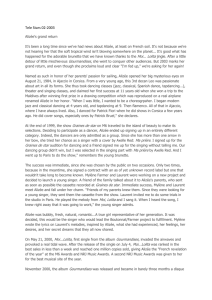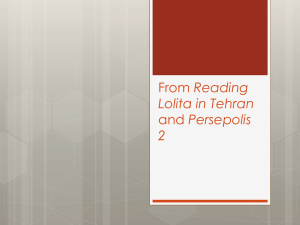Gothic Lolita and the Politics of Fashion
advertisement
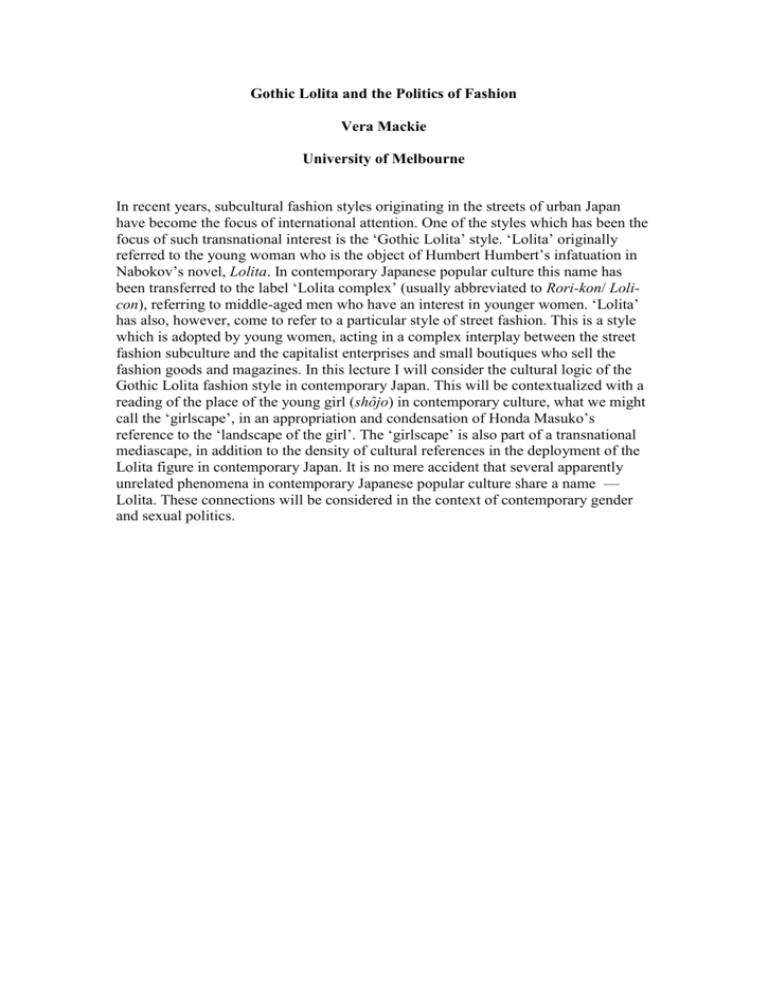
Gothic Lolita and the Politics of Fashion Vera Mackie University of Melbourne In recent years, subcultural fashion styles originating in the streets of urban Japan have become the focus of international attention. One of the styles which has been the focus of such transnational interest is the ‘Gothic Lolita’ style. ‘Lolita’ originally referred to the young woman who is the object of Humbert Humbert’s infatuation in Nabokov’s novel, Lolita. In contemporary Japanese popular culture this name has been transferred to the label ‘Lolita complex’ (usually abbreviated to Rori-kon/ Lolicon), referring to middle-aged men who have an interest in younger women. ‘Lolita’ has also, however, come to refer to a particular style of street fashion. This is a style which is adopted by young women, acting in a complex interplay between the street fashion subculture and the capitalist enterprises and small boutiques who sell the fashion goods and magazines. In this lecture I will consider the cultural logic of the Gothic Lolita fashion style in contemporary Japan. This will be contextualized with a reading of the place of the young girl (shôjo) in contemporary culture, what we might call the ‘girlscape’, in an appropriation and condensation of Honda Masuko’s reference to the ‘landscape of the girl’. The ‘girlscape’ is also part of a transnational mediascape, in addition to the density of cultural references in the deployment of the Lolita figure in contemporary Japan. It is no mere accident that several apparently unrelated phenomena in contemporary Japanese popular culture share a name –– Lolita. These connections will be considered in the context of contemporary gender and sexual politics.
